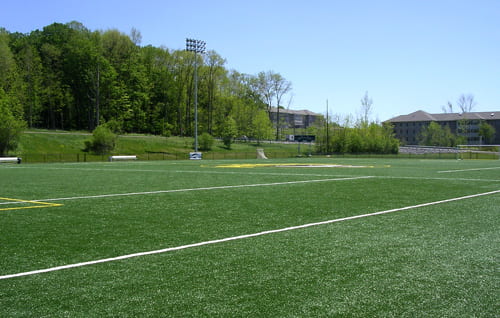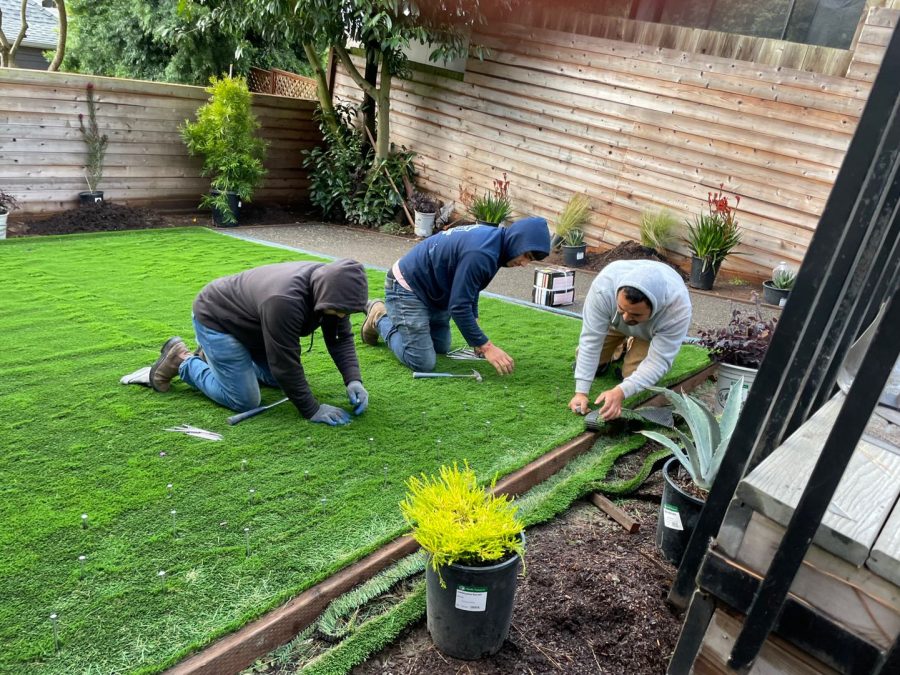High-Quality Arizona Turf Solutions for a Beautiful and Green Landscape
High-Quality Arizona Turf Solutions for a Beautiful and Green Landscape
Blog Article
Delve Into the Environmental Benefits of Opting for Synthetic Grass Solutions
The adoption of man-made grass services presents a compelling opportunity to attend to pushing environmental challenges. By substantially lowering water usage and decreasing the application of dangerous chemicals, these options not just promote lasting landscape design yet likewise protect neighborhood environments.
Water Conservation Conveniences
One of one of the most substantial advantages of synthetic grass is its capability to save water. Typical lawn lawns call for substantial watering, particularly in locations prone to dry spell or water limitations. In contrast, synthetic turf does not require watering, considerably lowering the overall demand for water resources. This attribute is specifically beneficial in dry areas where water deficiency is a pushing concern.
By removing the demand for regular watering, synthetic grass adds to sustainable landscape practices and helps reduce the environmental impact of too much water usage. Additionally, the preservation of water expands to the decrease of overflow, which can lead to soil disintegration and waterway air pollution.
In addition, the setup of synthetic grass enables districts and property owners to allocate water resources much more efficiently, concentrating on necessary uses such as alcohol consumption water and agriculture. The change towards synthetic grass not just promotes liable water use yet likewise lines up with broader ecological goals focused on maintaining natural sources.
As communities significantly focus on sustainability, the water conservation advantages of synthetic grass offer an engaging case for its fostering in household and industrial landscaping tasks.
Decreased Chemical Usage
The transition to synthetic grass dramatically lowers the dependence on chemical treatments typically utilized in all-natural lawn maintenance. Typical turf administration typically involves the application of herbicides, fertilizers, and chemicals to promote development and control pests. These chemicals can pose threats to human wellness, neighborhood wild animals, and the environment, adding to dirt and water contamination.
In comparison, artificial lawn removes the requirement for these damaging materials. By lessening the launch of synthetic substances into the ecosystem, synthetic lawn advertises much healthier dirt and water systems.
In addition, the lack of chemical overflow associated with fabricated grass installments assists safeguard regional waterways from contamination, supporting marine life and preserving biodiversity. Turf installation phoenix az. As areas progressively prioritize sustainable methods, choosing for synthetic turf provides a practical remedy that straightens with environmental conservation objectives. Via this change, building proprietors can delight in lavish green spaces without compromising eco-friendly wellness, leading the means for a more lasting future
Reduced Carbon Impact

Additionally, the installation of man-made turf can cause substantial water preservation. Natural yards need substantial quantities of water for watering, which not only contributes to the carbon footprint related to water extraction and therapy yet additionally strains regional water resources. On the other hand, synthetic grass needs marginal maintenance, needing no watering, consequently considerably reducing water use and its linked energy costs.
In addition, the durability of synthetic grass adds to its reduced carbon impact. With a life expectancy of as much as 15 years or more, the demand for regular replacements is diminished, resulting in much less waste and reduced energy intake in production and dealing with traditional grass choices. Generally, synthetic grass provides a lasting option for environmentally aware landscaping.
Environment Preservation
Environment conservation is a critical consideration in the discussion over landscape design choices, specifically when comparing fabricated turf to natural turf. Natural lawn lawns often call for extensive upkeep, consisting of using herbicides, fertilizers, and pesticides, which can adversely influence neighborhood environments. These chemicals can leach into the dirt and rivers, harming native vegetation and animals and disrupting local habitats.
On the other hand, man-made grass presents a possibility to reduce the ecological impact of landscaping. By choosing synthetic lawn, house owners can lessen the interruption of all-natural environments related to traditional lawn care techniques. Synthetic grass removes the requirement for hazardous chemicals, thereby shielding neighboring wild animals and keeping the integrity of bordering communities. Additionally, the installation of synthetic grass can cause the conversion of former turf areas into imp source even more biodiverse landscapes, such as pollinator yards or native plant areas, which can sustain local wildlife.
Eventually, the change to artificial turf not only preserves water and reduces maintenance efforts yet additionally promotes a much more unified partnership in between human activities and the native environment, advertising environment preservation while doing so.
Long-Term Sustainability
Long-term sustainability is an essential variable in assessing the advantages of synthetic grass over conventional grass lawns. Among the most substantial benefits of synthetic grass is its check over here resilience; it can last approximately 15-20 years with marginal maintenance, whereas natural turf needs regular reseeding and replacement. This longevity lowers the need for continuous resources, such as water, plant foods, and chemicals, which are vital for preserving a healthy turf lawn.
Additionally, synthetic read what he said grass contributes to a reduction in carbon discharges connected with lawn care tools. Conventional lawns commonly require gas-powered mowers, trimmers, and blowers, all of which add to air contamination. Phoenix turf companies. In comparison, man-made lawn gets rid of the requirement for such devices, advertising a cleaner setting
Furthermore, the manufacturing of synthetic grass significantly utilizes recycled products, improving its sustainability account. As suppliers embrace green techniques, the ecological impact of synthetic grass remains to reduce.

Verdict
The fostering of synthetic grass solutions offers significant ecological benefits, consisting of significant water preservation, minimized reliance on hazardous chemicals, and a lower carbon footprint. Fabricated lawn aids in protecting natural environments by reducing land disturbance and promoting long-lasting sustainability through the usage of sturdy products. Collectively, these factors underscore the possibility of synthetic grass to add positively to environmental health and supply a feasible option to typical landscaping techniques in a progressively resource-conscious world.
In comparison, man-made lawn does not require watering, significantly lowering the general need for water resources. By decreasing the release of synthetic substances right into the ecosystem, artificial turf promotes healthier dirt and water systems.
Moreover, the installment of synthetic turf can result in substantial water preservation. In comparison, artificial grass requires marginal maintenance, calling for no watering, thus dramatically minimizing water use and its associated energy expenses.
Report this page